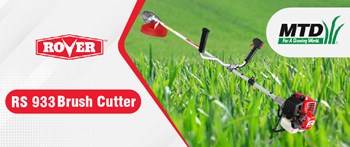
Introduction
Precision farming is all about doing the right thing at the right time and in the right place. Crop production inputs such as water, seed, and fertilizer are managed to increase yield, quality, profit, waste reduction, and environmental friendliness. Precision farming aims to increase the accuracy of agricultural inputs and practices by matching them to the crop and agro-climatic conditions. Why precision farming is important:
-
To increase productivity in agriculture with respect to profit
-
To prevents degradation of soil in cultivable land
-
To reduction the use of chemical in crop production
-
Efficient use of water resources
-
Dissemination of modern farm practices to increase quality and quantity
-
Reduced cost of production in agricultural crops
Advantages: Agronomical point of view Utilize agronomical practises by examining the crop's specific requirements. From a technical standpoint, effective time management is possible. Eco-friendly crop practises from an environmental standpoint from an economic standpoint, efficient use of farm inputs, labour, water, and other resources increases crop yield, quality, and lowers production costs. Precision farming is entirely based on the Global Positioning System (GPS), which was developed by US (United States of America) defence scientists for the US Defence Department's exclusive use. GPS is distinguished by its precision in both time and space. Precision agriculture (PA) refers to the application of precise and correct amounts of inputs such as water, fertilisers, pesticides, and other chemicals to a crop at the right time in order to increase productivity and maximise yields.
The application of inputs (such as chemical fertilisers and pesticides) in the correct quantity, at the correct time, and at the correct location. "Site-Specific Management" is the term for this type of management. Precision Farming is generally defined as information and technology based on the farm management system to identify, analyse and manage the spatial and temporal variability within fields for optimum productivity, profitability, sustainability and protection of land resources by minimising the cost of the production.
Tools And Equipment
Precision Farming is a combination of the application of different technologies. All these combinations are mutually inter-linked and responsible for the development of crops. The same are discussed below:
-
Global Positioning System (GPS): It is a set of 24 satellites in the Earth orbit. It sends out radio signals that a ground receiver can decode to determine its geographic location on the planet. The provided position on the earth will most likely be within 10-15 metres of the actual position 95% of the time. GPS allows precise mapping of the farms and together with appropriate software informs to the farmer about the status of his crop and which part of the farm requires what input like water or fertilizer and/or pesticides etc.
-
Geographic Information System (GIS): It is software that imports, exports and processes spatially and temporally geographically distributed data.
-
Grid Sampling: It is a method of breaking a field into grids of about 0.5-5 hectares. Sampling soil within the grids is useful to determine the appropriate rate of application of fertilizers. Several samples are taken from each grid, mixed and sent to the laboratory for analysis.
-
Variable Rate Technology (VRT): The existing field machinery with added Electronic Control Unit (ECU) and on board GPS can fulfil the variable rate requirement of input. Spray booms, the Spinning disc applicator with ECU and GPS have been used effectively for patch spraying. During the creation of nutrient requirement map for VRT, profit maximizing fertilizer rate should be considered more rather than yield maximizing fertilizer rate.
-
Yield Maps: Yield maps are created by analysing data from a GPS-equipped combine harvester that is integrated with a yield recording system. Yield mapping entails simultaneously recording the grain flow through the combine harvester as well as the actual location in the field.
-
Remote Sensors: These are the most common types of aerial and satellite sensors. They can show changes in the colour of the field due to changes in soil type, crop development, field boundaries, roads, water, and other factors. Vegetative indices, which reflect the health of the plant, can be calculated using aerial and satellite imagery.
-
Proximate Sensors: As the sensor-attached tractor drives across the field, these sensors can monitor soil factors like N status and soil pH) as well as crop attributes.
-
Computer Hardware and Software: In order to analyse the data collected by other Precision Agriculture technology components and to make it available in usable formats such as maps, graphs, charts or reports, computer support is essential along with specific software support.
-
Precision irrigation systems: The use of GPS-based controllers to regulate the motion of irrigation equipment is a recent development that has been released for commercial usage in sprinkler irrigation. To achieve higher water use efficiency, wireless communication and sensor technologies are being developed to monitor soil and ambient conditions, as well as irrigation machine operation parameters (i.e. flow and pressure).
-
Precision farming on arable land: The use of PA techniques on arable land is the most widely used and most advanced amongst farmers. CTF (Controlled Traffic Farming) is a whole farm approach that aims at avoiding unnecessary crop damage and soil compaction by heavy machinery, reducing costs imposed by standard methods. With the help of decision support systems, controlled traffic methods confine all field vehicles to the smallest possible area of permanent traffic lanes. Another important use of precision agriculture in arable land is to optimise fertiliser use, particularly Nitrogen, Phosphorus, and Potassium.
Author
Lokesh Kumar1, Balkesh Kumari2
1 Department of Horticulture, College of Agriculture, Agriculture University, Jodhpur
2 Department of Horticulture, Rajasthan College of Agriculture, MPUAT, Udaipur











Share your comments